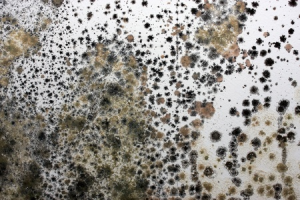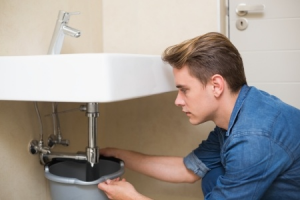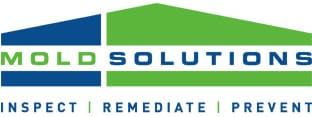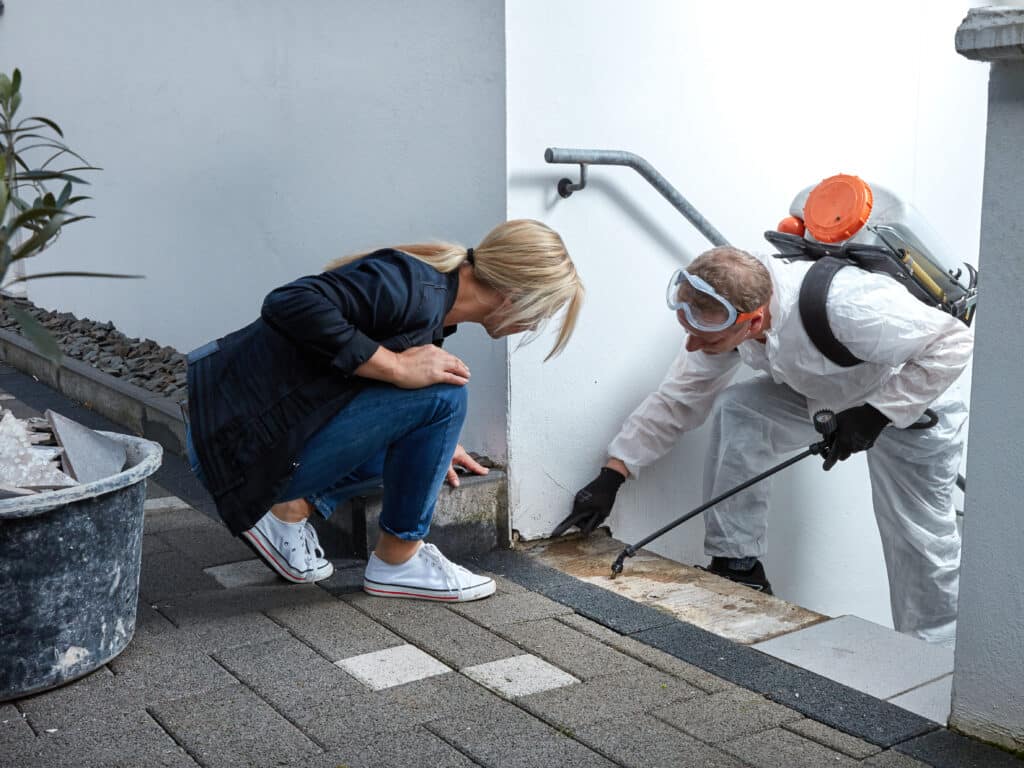Table of Contents
What Do You Know About Brown Mold?

Brown hairy mold, or Stemonitis, is called that because it has a brown furry appearance. Although it’s not typically as toxic as black mold, it can still affect the health of people who have weak immune systems, respiratory problems and allergies. Its existence should not be ignored.
Can Brown Mold Make You Sick?
That depends. If you are allergic to mold, exposure to it can cause symptoms ranging from a runny nose and watery eyes to asthma attacks. People most likely to experience symptoms of mold allergy are those who have allergies to dust mites or cockroach droppings as well as mold spores. Aspergillus is considered the most common cause of fungal allergy and respiratory infection in people with chronic lung disease such as asthma.
One kind of mold, called Stachybotrys, can create toxins that may be especially harmful to young children and the elderly. Even healthy people may experience a stuffy nose, sore throat, burning eyes, coughing, and wheezing if they are exposed to high levels of Stachybotrys. You can find out more about molds from the U.S. Environmental Protection Agency.
Brown mold is pretty much exactly what it sounds like – a type of mold that happens to be brown. But does the color change anything about the dangers of this type of mold? And how can you tell if there’s an infestation in your home, and if so, should you hire professional help or attempt to remove them yourself? Let’s take a look at the basics of brown mold.
Where is Brown Mold Found?

A commonplace for growth can be found in one of the wettest places in our homes – the bathroom. Water gets under the floor tiles, where it remains damp, and before you know it you have mold growth. By the time you see it on the tiles, there is probably a lot of damage done to the sub-flooring. This is one very good reason why carpeting in bathrooms is not a good idea.
Kitchens are another common breeding place for brown mold. If your refrigerator or your dishwasher has a leak that goes unnoticed, mold growth will begin.
One family had a dishwasher that had an undetected leak. Brown spots began appearing from the underside of the linoleum tiles before the homeowners knew there was a problem. Once the dishwasher was removed and the tile lifted, they were able to see the sub-floor was full of mold, rotted and needed to be replaced.
Frequently, people will mistake the new growth for dirt and try to sweep it away. That’s the worst thing you can do. Brown mold is an opportunistic organism that can grow very rapidly. You have to clean up all the affected area with a fungicidal cleaner, let it dry completely, then seal off any possible return of moisture (and therefore more mold).
Clean, dry wood is an excellent substrate where brown mold can grow. This happens most often to untreated lumber that was stored moist for some time before being used. Many times it occurs after the house has flooded or had a flood in the past; sometimes it can appear days (or even weeks) later. But it’s always the same story; mold growth begins, dry cleaners are used (often with spot treatments to cover up), and then more spotting is needed.
The only real cure for brown mold is to replace what was infested with something new. The idea here is that you not only have to get rid of this year’s mold growth but prevent the further infestation from the spores that are still in the air. In many cases, it is necessary to remove all wood and drywall. Then you have to completely replace them with new materials before the same thing happens again. If you fail to do this, sooner or later a new round of mold will strike, and it will be much more difficult to clean up.
Brown Mold On Carpet
In the case of carpeting, the mold is growing between the fibers – something that can’t be “sanded out” as with wood or drywall. In addition, since mold spores are very likely still in the air, replacing a carpet won’t solve the problem. You have to get rid of all of it, clean the area thoroughly then remove and replace that carpet with new material. The same advice applies if you can’t remove all or most of your carpeting; either way, you need new materials on top of what was there before. Any time you spot mold growth, no matter what type of material it is growing on, you should treat it as soon as possible.
Brown mold is a pretty terrible disease to have in your home, if only because of the difficulty involved in removing and replacing infested material. It can drive people out of their homes for weeks at a time while workmen are ripping out wallboard and insulation. It may take them another week or two to get the new material in place. The problems occur even if you have good insurance coverage for this sort of thing. You still have to deal with having your home exposed during all this time, while life goes on outside your door with no regard for what is happening behind it.
In some cases, brown mold is easy to spot and simple to remove – a little soap and water usually does the trick. In other cases, a diagnosis isn’t so cut-and-dried. Brown mold is misdiagnosed as many other things – including allergies. If you have a persistent problem with what seems to be allergy symptoms in your house, but nothing appears to be there or you’ve done what is ordered by your doctor and it doesn’t seem to work, you might want to start looking for brown mold.
Signs of Mold Growth
Sometimes mold can be seen growing right under the finished surface of the walls or ceilings, it’s easy to miss unless you are looking closely. You will need to pull back all wallpaper and peel off any tiles in order to find visible patchy mold growth. This could be caused by water leaks, roof damage, or flooding.
A lot of people lose power in their homes during severe weather, and sometimes when the power comes back on it may cause short circuits in your electrical sockets. If you notice that some of these sockets are wet, then there is most likely a hidden mold problem under them (not to mention a fire hazard).
Brown Mold On Wood Flooring
In order to find any hidden mold, you will probably need to pull up all of your floorings. Be careful though, if the floor underneath is damaged then there could be a problem with the structure of your building that needs attention from a builder or engineer. You can check for rot by tapping on wood floors and listening for a high pitch or dull thud. If the sound is more of a thud than a high pitch, then you probably have not found mold growth just yet.
You will want to start with the subfloor (the wood that was covered by your flooring), then if no mold is found continue pulling up floorboards starting near exterior walls first. When you’re finished, check every possible stapled seam and every edge of the floor for signs of rot. If you do find some wood that is more spongy than solid, then it’s time to treat the mold. You will need a respirator and goggles for this part of the job. Don’t forget your rubber gloves and be sure not to mix cleaners together without reading through their warnings and instructions first. If you discover significant levels of mold, don’t try to clean it up yourself; get professional help.
Brown Mold In Bathroom
Wood is the source of brown mold. As a result, you might not detect it on the surface of your bathroom’s ceramic or tiles. It is most commonly seen between tiles, corners, windowsills, and flooring. Some bathroom rugs are also conducive to the formation of brown mold. Fibers are present in the fuzzy appearance, which is why it is commonly referred to as “fuzzy mold.”
The culprit of the growth is usually condensation. The bathroom gets cold when you take a shower or bath and then warm when the heat kicks on. This leads to dampness which can grow fungus. If there are any leaks in this room, they can also promote the growth of this mold. The best way to prevent it is by venting this room. Keep doors open, and turn on exhaust fans after showering or bathing. Also, make sure that there are no leaks under any sinks in your house, especially when you are away for an extended period of time.
Pressure washing prevents the growth of this fungus. If you do find brown mold in your home, use a pressure washer and bleach to get rid of it. This method is most effective when applied to tiles and grout. You can also use a mixture of vinegar or tea tree oil with water to attempt to remove mold.
Aeration is another way to kill this fungus. Just open the windows in your bathroom, especially if you are using an exhaust fan. You can also use fans to boost the airflow in this room.
Other substances that grow this fungus include plants, hair, and even foodstuffs. If you keep any of these in your bathroom, then they may draw moisture from it and encourage mold growth.
The best prevention is to make sure that the room has proper ventilation. You should also make sure that the humidity level remains low at all times. Keep windows and doors open whenever possible, especially after using your shower or bathtub.
Brown Mold On Ceiling
This one’s easy; where there’s a leak, there’s mold. If you have noticed that your ceilings are damp or feel “clammy” then this is probably a mold problem. Most leaks occur from burst pipes which need to be repaired as quickly as possible with insulation to avoid further damage and mold growth. All of these problems can usually be fixed themselves, but you will need to take extra precautions by covering work areas with plastic sheeting and wearing protective clothing.
If you have already found mold growth around your home or business, then it’s highly likely that there could be more hidden inside. You should check all walls, ceilings, and floors for any sign of water damage that could have caused mold to grow behind them. If you have found a patch of visible mold in one room, but not in any other areas – then it’s likely that the source of water is from the specific room itself, so this should be looked at first.
Mold can sometimes be hidden in corners and underneath furniture, like behind bookcases or entertainment units. You will need to take extra care when moving around these areas so you don’t knock anything over and disturb the mold which is already there. If at any stage you are not too sure of what is causing this problem, then it would be best to call in a licensed professional to inspect your home for mold growth. Of course, it would be a good idea to clean out the mold as best you can, but you should avoid using bleach as this could cause discoloration of your home. If it is already growing behind walls and floors then you will need to call in a professional team with specialist equipment.
Being able to see the growth is not the only way to detect a mold problem.
- Mold gives off a musty odor – you may be able to smell it whenever you are in the area of the growth.
- If you ever see mushrooms growing on the inside of your home, it’s pretty certain that you have hidden mold and very likely damage from rot and insects.
If you have found, or even think you have mold growing in your home or business, it’s important to have it removed correctly and thoroughly. Don’t take a chance of spreading the spores by trying to remove them yourself…call an expert to remediate the problem.
Contact us – Mold isn’t always easy to see, but we know what to look for, where to find it, and what to do when its found.










